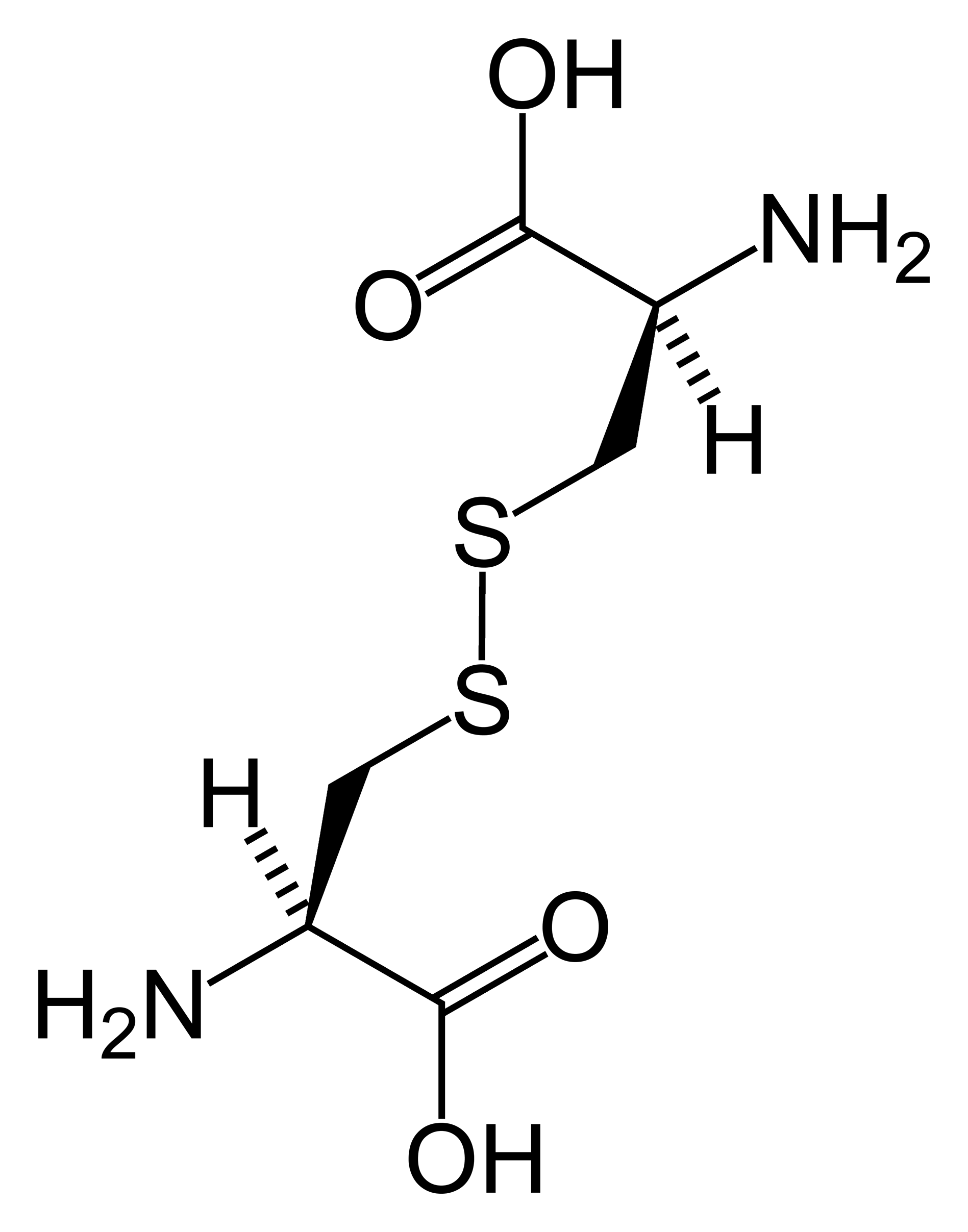Cystinuria
| Cystinuria | |
 | |
|---|---|
| Chemical structure of cystine formed from L-cysteine (under biological conditions) | |
| ICD-10 | E72.0 |
| ICD-9 | 270.0 |
| OMIM | 220100 600918 |
| DiseasesDB | 3339 |
| MedlinePlus | 000346 |
| eMedicine | med/498 |
| MeSH | D003555 |
|
WikiDoc Resources for Cystinuria |
|
Articles |
|---|
|
Most recent articles on Cystinuria |
|
Media |
|
Evidence Based Medicine |
|
Clinical Trials |
|
Ongoing Trials on Cystinuria at Clinical Trials.gov Clinical Trials on Cystinuria at Google
|
|
Guidelines / Policies / Govt |
|
US National Guidelines Clearinghouse on Cystinuria
|
|
Books |
|
News |
|
Commentary |
|
Definitions |
|
Patient Resources / Community |
|
Patient resources on Cystinuria Discussion groups on Cystinuria Patient Handouts on Cystinuria Directions to Hospitals Treating Cystinuria Risk calculators and risk factors for Cystinuria
|
|
Healthcare Provider Resources |
|
Causes & Risk Factors for Cystinuria |
|
Continuing Medical Education (CME) |
|
International |
|
|
|
Business |
|
Experimental / Informatics |
Editor-In-Chief: C. Michael Gibson, M.S., M.D. [1]
Overview
Cystinuria is an inherited autosomal recessive disorder and is characterized by the formation of cystine stones in the kidneys, ureter, and bladder.
Newfoundland dogs are at an increased risk for cystinuria, compared with other breeds of dogs.
Historical Perspective
Classification
Cystinuria is characterized by the inadequate reabsorption of cystine during the filtering process in the kidneys, thus resulting in an excessive concentration of this amino acid. Cystine will precipitate out of the urine, if the urine is neutral or acidic, and form crystals or stones in the kidneys, ureters, or bladder.
Mutations in the SLC3A1 and SLC7A9 genes cause cystinuria. The SLC3A1 and SLC7A9 genes provide instructions for producing the two parts of a transporter protein that is made primarily in the kidneys. These defects prevent proper reabsorption of basic, or positively charged amino acids such as histidine, lysine, ornithine, arginine and cystine.[1] Normally this protein allows certain amino acids, including cystine, to be reabsorbed into the blood from the filtered fluid that will become urine. Mutations in either of these genes disrupt the ability of this transporter protein to reabsorb these amino acids, allowing them to become concentrated in the urine. As the levels of cystine in the urine increase, the crystals typical of cystinuria are able to form, resulting in kidney stones. Cystine crystals form hexagonal-shaped crystals which can be viewed upon microscopic analysis of the urine. The other amino acids that are not reabsorbed do not create crystals in urine. The disorder affects 1 in 10,000 people and is inherited in an autosomal recessive pattern.
Pathophysiology
Causes
Differentiating Cystinuria from Other Diseases
Epidemiology and Demographics
Risk Factors
Screening
Natural History, Complications, and Prognosis
Natural History
Complications
Prognosis
Diagnosis
Diagnostic Criteria
History and Symptoms
Physical Examination
Laboratory Findings
Imaging Findings
Other Diagnostic Studies
Treatment
Medical Therapy
Surgery
Prevention
See also
- Cystine
- Cysteine
- Thiola
- International Cystinuria Foundation
- Hartnup disease
- Cystinosis
- Homocystinuria
External links
References
- ↑ Ahmed K, Dasgupta P, Khan MS (2006). "Cystine calculi: challenging group of stones". Postgraduate medical journal. 82 (974): 799–801. doi:10.1136/pgmj.2005.044156. PMID 17148700.